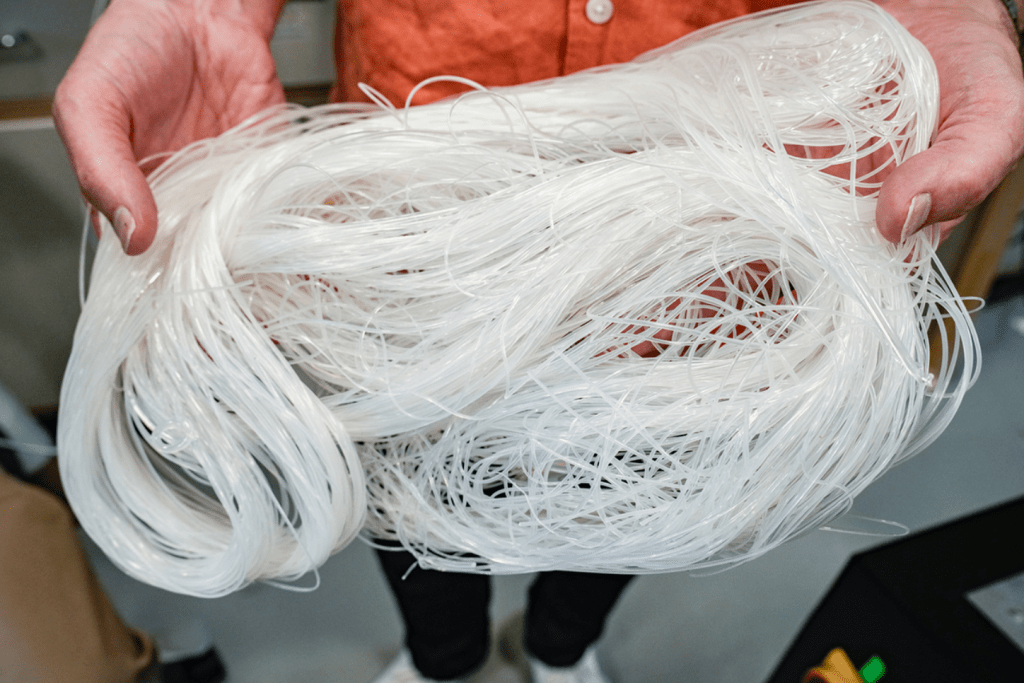Art conservators were starting to panic after two critical ingredients for a glue called Beva 371 and used to line historical canvases were discontinued.
However, researchers from the School of Polymer Science and Polymer Engineering at Ohio’s University of Akron (UA) and New York University’s (NYU) Conservation Center of the Institute of Fine Arts have developed a new, safer version of the adhesive. It is less susceptible to supply-chain issues, less toxic, and comes in various forms, including a solvent-free extrusion that looks like rice noodles.
Beva 371 is an abbreviation for Berger’s Ethylene Vinyl Acetate 371, named after Austrian American conservator Gustav Berger, who died in 2006. He created the glue in 1972, and it was particularly effective at sticking new canvases to old ones to shore them up, a process known as “lining.” Unlike old glues, it did not darken the paint layers by seeping into the original canvas, so it was widely adopted in the industry.
Paris Through a Window (1913) by Russian French modernist Marc Chagall, which resides at the Solomon R. Guggenheim Museum, was reportedly the first work from a museum collection to be treated with Beva 371. Countless works have benefitted from the glue since.
But after the discontinuation of one of its key ingredients in 2005, the resin Laropal K-80, there was some trepidation among conservators. And when production of another vital element, the tackifier Cellolyn 21E, was halted in 2020, the industry really started to worry. “Without these key resins, a major resource for the field of art conservation was lost,” Ali Dhinojwala, a professor from the College of Engineering and Polymer Science at UA, said in a statement.
Fortunately, the Getty Foundation’s Conserving Canvas project handed NYU a research grant to develop a new adhesive. The university teamed up with UA’s cutting-edge polymer science and plastics engineering programme, and Beva 371 Akron was born.
Related Articles

“Finding a satisfactory substitute that matched the original adhesive’s favourable thermal performance was critical to optimising the material options available to conservators,” Dhinojwala added.
The fact that Beva 371 Akron can be produced in three different forms is another advantage. They are a pre-mixed, heat-seal variant like the original formula; a solid, spaghetti-like form that once cut into pellets is easier to transport; and soon-to-be released, pure adhesive, and solvent-free variant.
“We’ve conducted rigorous performance testing of the recipe with leading experts, and we are thrilled with the new, conservation-optimised formulation that will provide conservators more ways to work,” Chris McGlinchey, the project director at NYU and the former senior conservation scientists at the Museum of Modern Art, said in a statement. “It’s a big win anytime you enable a conservator to do their work more safely and effectively.”
Conservators in Europe worked with the university researchers to develop Beva 371 Akron. “With its advances in materials innovation and sustainability, the project is a shining example of how successful collaboration can be in a niche industry like ours,” Paul Ackroyd, a conservator at the National Gallery in London, said in a statement.
The researchers who developed Beva 371 Akron are presenting their findings this week at the American Institute of Conservation’s yearly conference in Minneapolis.

